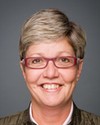Thank you for giving me the privilege today to present certain perspectives of the Royal College of Physicians and Surgeons of Canada.
I will be focusing my comments on the 67 other specialties outside of family medicine. The College of Family Physicians of Canada may present at a separate time.
We all know that training a doctor takes a really long time. If we had a better understanding of the needs of the patients, we could probably better modulate the production of our medical workforce with the actual needs of our population. Needs-based planning is really not sophisticated in Canada, with very different approaches across the country. Is it that we really are short of doctors, or is it a maldistribution of doctors? Some of our research is flagging the point that we may now have a right balance of physicians in certain specialties.
Beyond the needs of the patients, there are system needs as well. Teaching hospitals bring in residents because they're service providers. Are they hired as residents as future doctors because they're really needed for the health care needs of the community, or is it for the immediate institutional needs of the hospital?
We're then in a situation that you might have in British Columbia, for example, according to the Canadian Institute for Health Information, and that is the highest ratio of anesthesiologists in the country but where anesthesiologists from that very province are expressing concerns about very frequent call schedules, and so on, and concerns that they might not be practising in an optimal way, potentially putting patients in harm's reach.
In P.E.I., at the other end of the country, they're taking clinicians away from clinics to staff their hospitals, so they're impairing access to the places patients should be going and redirecting them to hospitals, which are more costly. Again, suboptimal work conditions and suboptimal distribution, whether or not the result of real shortages, are creating bottlenecks of access for patients.
If we could better understand not only the needs of our patients, who are presenting with more complex problems—with comorbidities, and so on—but who also have increasing expectations.... Where do you draw the line in meeting the expectations of patients and that basket of medically necessary services? That is a very broad question that we have failed to grapple with when we're looking at the real needs of populations.
From the providers' point of view, we're seeing a new breed of physicians coming on board. They rank work-life balance as one of the highest things in all the areas of research we're doing. It's not a bad thing: they're good parents; they're not as tired; they're providing better, safer care. There are more women entering medicine, and until you gentlemen can start having babies, women do the child care. They work on average seven hours less a week in that child-rearing phase. We have to factor that in when doing our health care modelling.
With all of the wonderful data that we have to pull these pieces together, to look at the impact.... For example, when you have a new physician assistant coming on board, what is the impact on the need for your medical workforce of the future, recognizing that it takes years to train a doctor?
We were thrilled to see the Senate committee recommending that we pursue the notion of a health workforce observatory. I hope it will be sustained throughout and that the government will view this as a positive way forward, because if we have each province do it within their own resources, we end up with a hodge-podge of workforce approaches.
We're failing to integrate our international medical graduates and to also recognize really scary things. With the U.S.'s new health care reform, they're forecasting right now a shortage by 2020, which is just around the corner when you think how long it takes to train a doctor, of more than 90,000 physicians.
They love the quality of the training of health providers in this country. In the not very distant past, we lost a graduating class from a large teaching centre every year to the United States. We will not be able to keep up with production. We cycle from a boom to a bust, and I anticipate that it will continue.
As to the maldistribution, we could align individuals with jobs more easily if a health workforce agency could help us. We now have evidence of unemployed or underemployed cardiac surgeons as well as centres that are looking for cardiac surgeons. But four out of ten doctors in training have absolutely no career counselling. They don't know where to go, and finding a job in this complex system is a full-time job requiring special skills.
As for how we integrate our international medical graduates, the two national certified colleges have coordinated with the Collège des médecins du Québec, and we're looking at in-practice and various other forms of assessment to ensure that our internationally educated physicians have the right knowledge, skills, and attitudes to provide health care in the Canadian context. We're all doing this with our own resources, recognizing that other provinces have their own systems.
With the agreement on internal trade and the pipeline this gives clinicians, our cities could end up with internationally trained physicians having varying levels of skills, and I don't think that will serve the population well either. So some coordinated efforts in that regard would benefit not only the system but patients as well.
Merci beaucoup.



